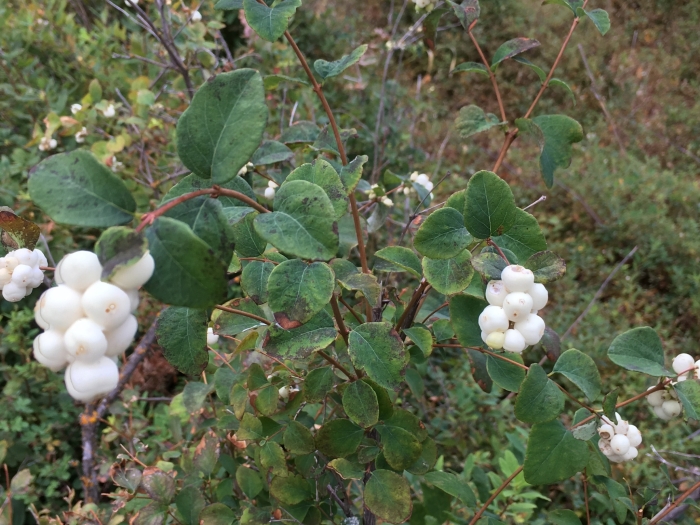Common Snowberry
(Symphoricarpos albus)
Common Snowberry (Symphoricarpos albus)
/
/

Al Kordesch
Public Domain
Image By:
Al Kordesch
Recorded By:
Copyright:
Public Domain
Copyright Notice:
Photo by: Al Kordesch | License Type: Public Domain | License URL: http://creativecommons.org/publicdomain/zero/1.0/ | Rights Holder: Al Kordesch | Publisher: iNaturalist | Date Created: 2018-09-22T18:59:21Z |


































































































Estimated Native Range
Summary
Symphoricarpos albus, commonly known as Common Snowberry, is a deciduous shrub native to a wide range of habitats in North America, including open woodlands, forest edges, and riparian zones. It is particularly adaptable, often found in moist mountain areas, as well as on floodplains and riverbanks. This species typically reaches 1–2 meters (3+1⁄2–6+1⁄2 feet) in height and is characterized by its erect form, stiff branching main stem, and the ability to spread via rhizomes to form dense thickets.
The shrub is notable for its white, globe-shaped berries that persist into winter, providing visual interest and food for birds. The pinkish-white flowers bloom in late spring to early summer and are modest in appearance. Common Snowberry is used for ornamental purposes, erosion control, and as a wildlife habitat plant. It is relatively low-maintenance, tolerating a range of soil types and moisture levels, though it prefers full sun to part shade. While it is generally disease-resistant, powdery mildew can be a problem in humid conditions.CC BY-SA 4.0
The shrub is notable for its white, globe-shaped berries that persist into winter, providing visual interest and food for birds. The pinkish-white flowers bloom in late spring to early summer and are modest in appearance. Common Snowberry is used for ornamental purposes, erosion control, and as a wildlife habitat plant. It is relatively low-maintenance, tolerating a range of soil types and moisture levels, though it prefers full sun to part shade. While it is generally disease-resistant, powdery mildew can be a problem in humid conditions.CC BY-SA 4.0
Plant Description
- Plant Type: Subshrub, Shrub
- Height: 3-6 feet
- Width: 3-6 feet
- Growth Rate: Moderate
- Flower Color: N/A
- Flowering Season: Summer, Fall
- Leaf Retention: Deciduous
Growth Requirements
- Sun: Full Sun, Part Shade
- Water: Medium
- Drainage: Fast, Medium, Slow
Common Uses
Bank Stabilization, Bee Garden, Bird Garden, Border Plant, Butterfly Garden, Deer Resistant, Drought Tolerant, Erosion Control, Fire Resistant, Groundcover, Hummingbird Garden, Low Maintenance, Street Planting
Natural Habitat
Open woodlands, forest edges, and riparian zones
Other Names
Common Names:
Scientific Names: , Symphoricarpos albus, Symphoricarpus albus, Symphoricarpus racemosus, Symphoricarpos racemosus, Symphoricarpos albus var. pauciflorus, Symphoria racemosa, Symphoricarpus rivularis, Symphoricarpos racemosus var. pauciflorus, Symphoricarpos pauciflorus
GBIF Accepted Name: Symphoricarpos albus (L.) C.Koch